

Introduction
The nation of Israel had gone through cycle after cycle of revival, beginning immediately following the deaths of the elders that outlived Joshua (Joshua 24:31) and continuing until John the Baptist’s ministry began (1372 B.C. till 26 A.D.).
Reading the Bible, it is easy to see this oft-repeated cycle, with the
obedience, falling away, repentance;
obedience, falling away, repentance.
In the year 444 B.C., Nehemiah said that God delivered Israel “time and again” (Nehemiah 9:28), but they still remained fiercely rebellious against Him and treated His mercies with contempt. The cycle of obedience, falling away, repentance, has tragically been repeated throughout Church history, right up to this present time.
400 Silent Years
With correction flowing from His loving heart, God disciplined Israel by allowing the nation to slide into a very dark time following the prophet Malachi’s writings. This period was known as the “400 Silent Years” (400 – 5 B.C.). During this era, there were
► No divine revelations, either through prophecy, visions, or dreams.
► No prophets.
► No notable godly leaders.
Most of the religious leaders were the formal
…• Pharisees, who lived dead spiritual lives and led others into worse conditions, loading them down with weights of religious works not demanded by God (Matthew 23:15).
…• Liberal Sadducees, who denied there was a spirit realm and were merely in the religious profession for the power it afforded them (Matthew 22:23).
In the midst of this darkness there was still hope, because God, who cannot lie (Titus 1:2), promised throughout the Old Testament Scriptures that he would send a redeemer, a Messiah. Moses spoke of this prophet who would come (Deuteronomy 18:15), as did Isaiah and most of the other prophets, with some scholars counting up to 400 or more prophecies specifically in reference to the Redeemer, the Savior, Jesus (Isaiah 9:6-7).
Around 712 B.C., there was one of many Old Testament prophecies which gave Simeon, Anna, and others hope and inspiration to pray. This particular prophecy mentioned a person who would be the forerunner to the Messiah, one who would make smooth and straight the road before the Messiah, in preparation for his appearing (Isaiah 40:3-5; Malachi 3:1-3; 4:5-6). This prophecy was in direct reference to John the Baptist.
At the end of the 400 Silent Years, and when the “fullness of time” had come (Galatians 4:4), God did what He has always done when He gets ready to visit His people; He calls them first to prayer.
Extraordinary Prayer
Almost without exception, of the 200+ revivals we have documented, they have all begun with extraordinary prayer, and the revival now being focused on is no different. We don’t know the intensity of prayer that was made for the reviving of the nation, but we know of some that spent all their time at the temple praying for “the Consolation of Israel” (Luke 2:25-35).
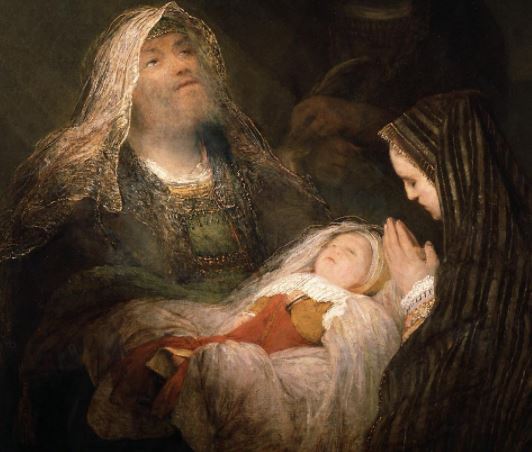
Simeon and Anna, with Jesus: Arent de Gelder
Simeon
Simeon was one of those “just and devout” God-fearing men who had received a promise from God that he wouldn’t die until he had seen the Lord’s Christ (Luke 2:26). We don’t know how many others there were like Simeon, who spent much of their time in prayer, anticipating the arrival of the promised Messiah, but we can be assured that there were others.
Anna
The prophetess Anna, about 84 years old, was a second named person who spent all of her time in the temple, fasting and praying, in anticipation for the redemption of Israel (Luke 2:36-38).
Others
Who knows how many others were associated with Simeon and Anna, uniting with them in prayer? There is no reason to doubt that there were some God-fearing Pharisees that were part of this crowd of intercessors, as well as many others who were desperate for the appearing of the promised Messiah (Luke 2:38).
Ripe for Revival
Revivals have always occurred when social, political, and international situations looked the bleakest, and when, from all appearances, hope seemed lost and nothing was offering any assurance that the situation could turn around.
These are the times when God steps forward, manifests Himself through unlikely individuals, and bludgeons the powers that be. It is during these times that God exposes and highlights the immense failure on the part of religious leaders, as well as the blindness of those following them.
John the Baptist (6 B.C. – 29 A.D.)
There were some unique characteristics that make John stand out from all others. Here are a few:
► Jesus claimed that John the Baptist was the greatest man ever born (Matthew 11:11).
► Old Testament Scriptures foretold of his ministry, up to 700 years before his birth (Isaiah 40:3-5; Malachi 3:1-3; 4:5-6).
► The angel Gabriel appeared to John’s father, Zechariah, telling him:
…• God had heard his prayers and he and his wife Elizabeth were to have a son, even though they were advanced in years and she had previously not been able to conceive (Luke 1:7).
…• Zechariah was to name his son John (Luke 1:13).
…• The boy would be great in the eyes of the Lord (Luke 1:15).
…• The boy must never touch wine or any alcoholic drinks (Luke 1:15).
…• His son would be filled with the Holy Spirit before his birth (Luke 1:15).
…• John would turn many Israelites to the Lord their God (Luke 1:16).
…• John would be a man with the spirit and power of Elijah (Luke 1:17).
…• John would prepare the people for the coming of the Lord (Luke 1:17).
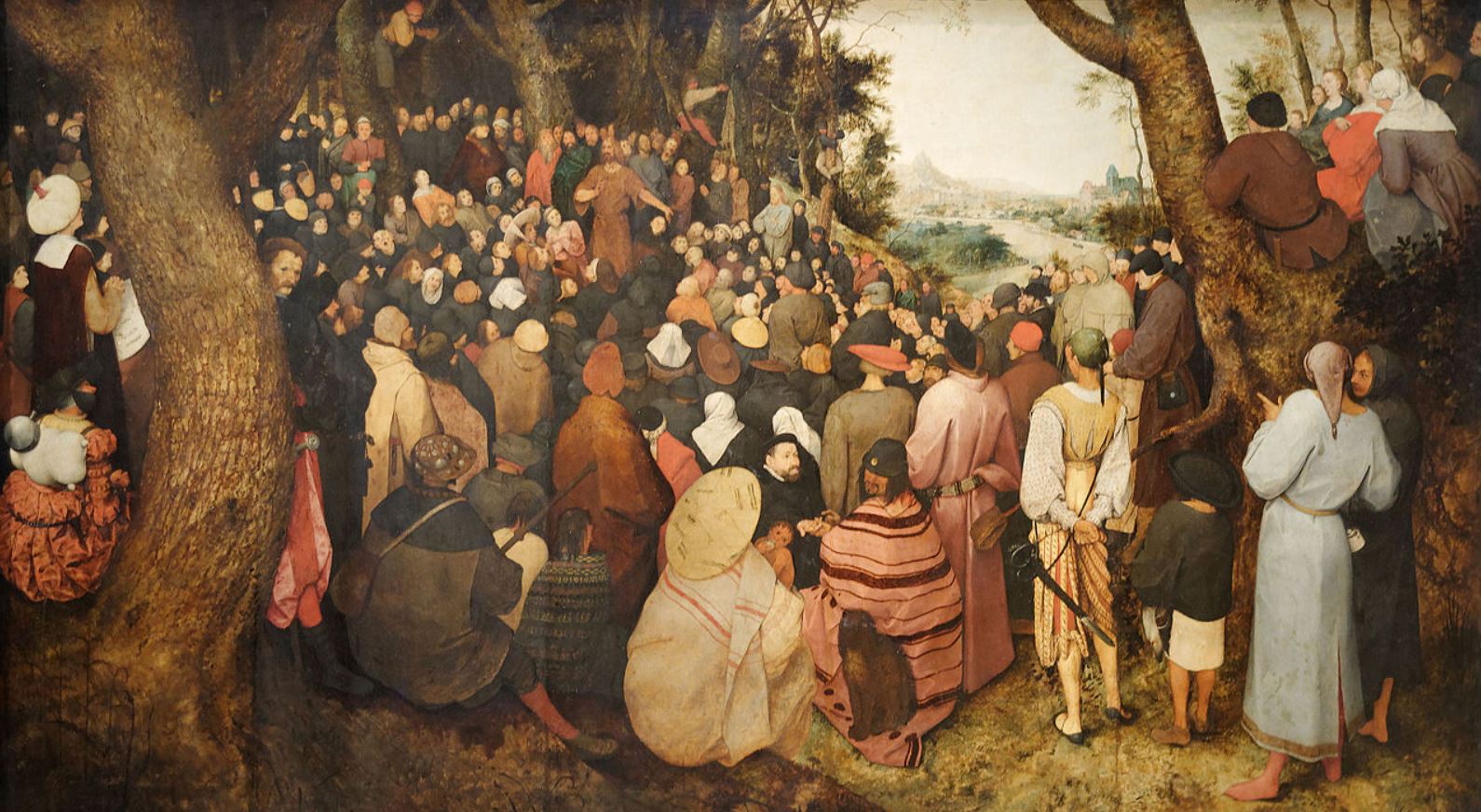
John preaching: Pieter Bruegel the Elder
Demands Placed upon John the Baptist in His Development
John’s strict discipline, placed upon him by God, was necessary in preparing him for his ministry. The Pharisees and Sadducees would have to be looked right in the eye, and with no quiver or wavering in his voice, he would be required to point out their sins and demand they repent—turn from their sins (Matthew 3:7).
John’s preparation undoubtedly followed the path that many have experienced through the years. When God calls a person to bring His people back to Himself, that person must often go through a time of severe testing and trials, often over many years. These testings are to ensure the person will be submitted and obedient to the task assigned, and that they will not waver in the midst of the battle.
Some fantasize about being such a person, but the demands of such a task can only be sustained by one whom God has called, and who has submitted themselves to God’s winepress, involving frequent trials, until God breaks them down to the point where all they have left is total surrender, submission, and absolute yieldedness to the will and purposes of God.
Though many are called to such a role, not many make it through God’s time of testing. Here are a few of the demands placed upon John the Baptist during his preparation time:
► He lived an austere life, not indulging in luxury or comforts.
► His foods were restricted, partially by God’s order (Mark 1:6; Luke 1:15).
► His clothing was coarse and inexpensive (Mark 1:6; Luke 7:25; Matthew 11:8).
► He lived in isolation without entertainment (Luke 1:80).
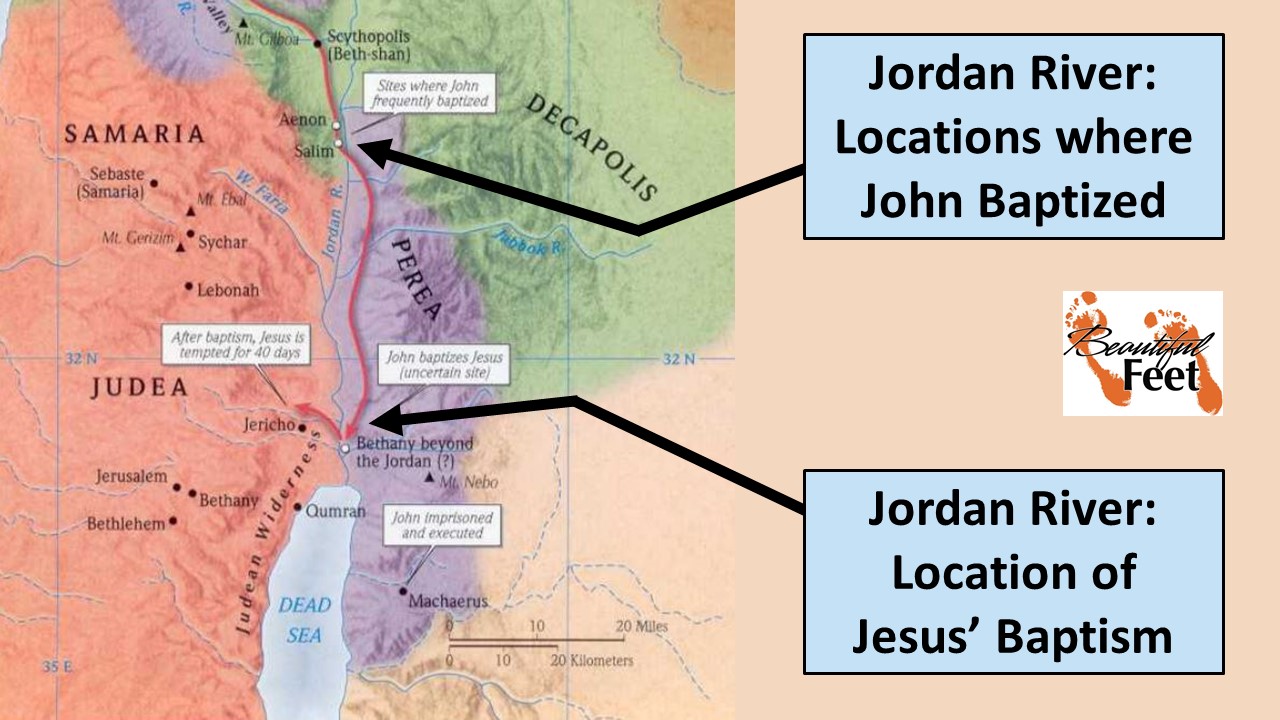
What Happened
John had been living in isolation in the desert for most of his life. How he sustained himself we are not told, but when God’s timing was right, he began preaching his message with a focus on repentance. From the results, it is evident that he had passed through his fiery trials and that he was indeed well-prepared for the task.
► His preaching was bold and uncompromising (Matthew 3:7; Luke 3:19).
…• Even with the potential for imprisonment or death, he never wavered.
► He performed no miracles (John 10:41).
► God’s favor produced a divine influence and presence about him and many followed him – from “Jerusalem and from all of Judea and all over the Jordan Valley” (Matthew 3:5-6; John 3:23; 10:41).
► He carried the respect and reverence of the people and was even feared by Herod (Mark 6:20).
► He was privileged with the honor of announcing the arrival of Emanuel, God among His people (John 1:29).
► He didn’t speak of his own ministry; he always pointed people to Jesus.
…• “He who is coming after me is mightier than I…” (Matthew 3:11-12; John 1:19-37; John 4:1).
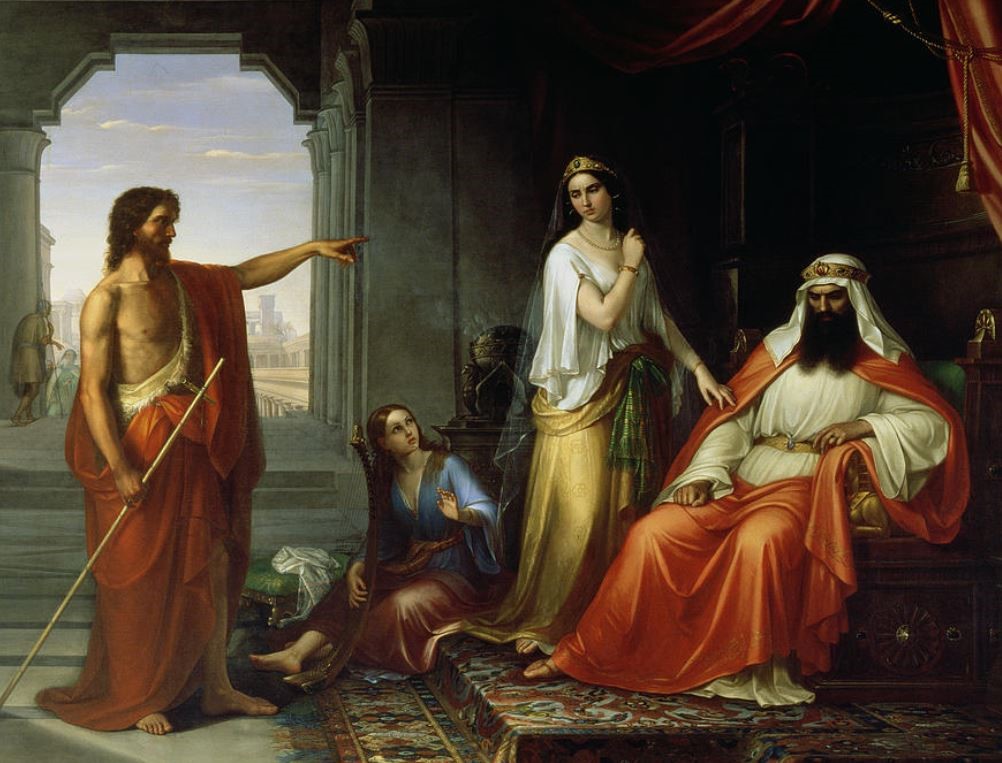
John, Herod, Herodias, and daughter Salome: Giovanni Fattori
His Ministry Lasted Six Months
► His obedience of preaching repentance led to his execution (Matthew 14:1-12; Mark 6:14-29; Luke 9:7-9).
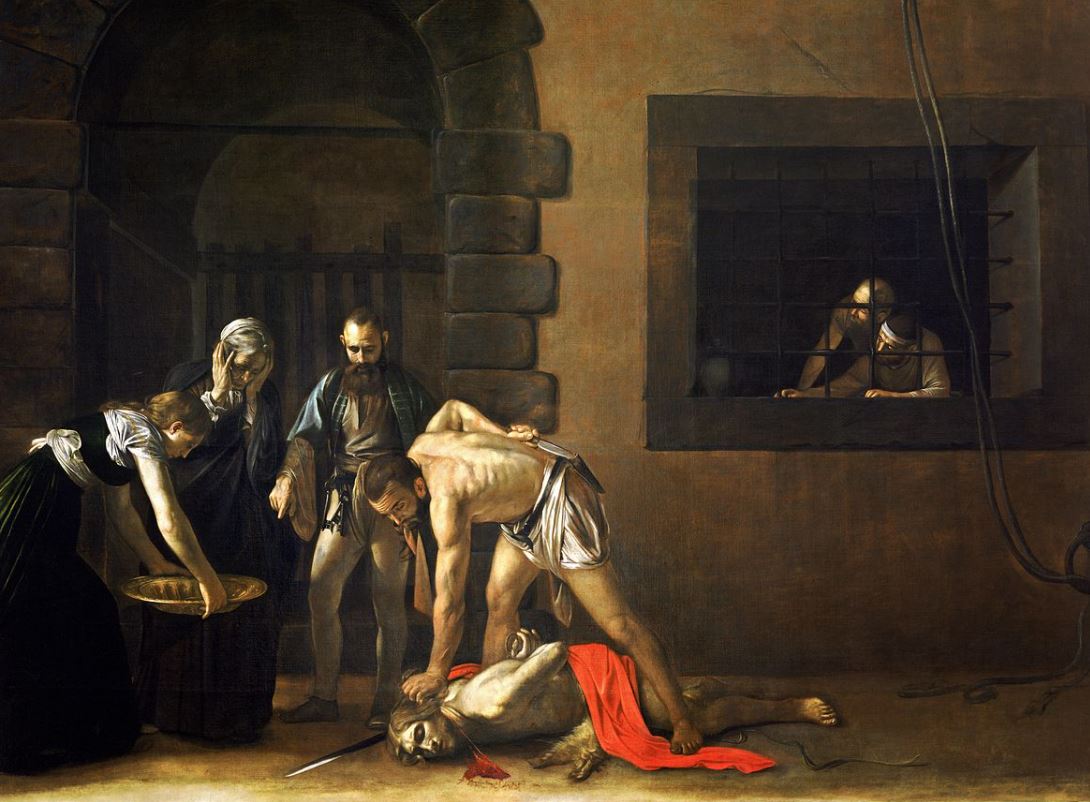
Beheading of John: Caravaggio
Repentance
John’s message, along with the message of Jesus and those who came after Jesus, was that people should turn from their sins—repent:
► John’s message was repentance (Matthew 3:2).
► Jesus’ message was repentance (Matthew 4:17).
► The 12 disciples were told to tell people to repent (Mark 6:12).
► Peter’s message on Pentecost was that people should repent (Acts 2:38).
► Paul said that God commands everyone to repent (Acts 17:30).
Results of the Revival
► The Scriptures are silent concerning the number of people who turned from their sins through John’s preaching. But we do know that “People from Jerusalem and from all of Judea and all over the Jordan Valley went out to see and hear John. And when they confessed their sins, he baptized them in the Jordan River” (Matthew 3:5-6).
► People were awakened to their sin and were pointed to the Savior (Luke 1:16-17).
► The people were hungry for more of God and wanted to live obediently. They asked John for counsel on what they should do next, and he gave them specifics (Luke 3:10-14).
► People slowly stopped following John and began following Jesus—which is just what John had prophesied would and should happen—“He must increase, and I must decrease” (John 3:30; 3:26-36).
► Today, because of John’s and other people’s submissiveness to their call from God, there are 2 billion 200 million that say they are followers of Jesus.
Sources:
► Isaiah 40:3-5—The call to prepare for the coming of the Lord.
► Malachi 3:1-3—John will call for repentance. Jesus will refine and purify.
► Malachi 4:5-6—Receive his message, or God will strike the land with a curse.
► Luke 1:5-25—Zechariah and Elizabeth. Gabriel’s directions for John’s naming and upbringing.
► Luke 1:39-45—Mary visits Elizabeth. Elizabeth filled with the Holy Spirit. Leaping of John.
► Luke 1:57-80—John’s birth. Zechariah’s prophecy of him.
► Luke 2:25-38—Prophecies of Simeon and Anna
► Luke 3:1-22—John’s message of repentance. Giving follow up counsel.
► Matthew 3:1-17—The O.T. prophecies fulfilled. John’s preaching and Jesus’ baptism.
…• Mark 1:1-11—John’s message, attire, and Jesus’ baptism.
…• Mark 1:14-15—John’s message of repentance.
► Matthew 11:1-15—John sends messengers to Jesus, and Jesus’ comments about John.
…• Luke 7:18-35—John sends messengers to Jesus. Jesus’ honor given to John.
► Matthew 11:11-15—the greatest born of women; this is Elijah.
► Matthew 14:1-12—John’s death
…• Mark 6:14-29—John’s death
…• Luke 9:7-9—John’s death
► Matthew 17:11-13—As Elijah (John) was abused, Jesus will also be abused.
► John 1:6-8—John came to testify of the light.
► John 1:19-37—John’s testimony of himself. John pointing to the Lamb.
► John 3:22-36—John’s lengthy testimony of Jesus.
► John 10:41—John performed no miracles, yet many followed him.
Return to List of Revival Stories
Chet & Phyllis Swearingen:
Office: (260) 920-8248
romans1015@outlook.com
Beautiful Feet
P.O. Box 915
Auburn, IN 46706

